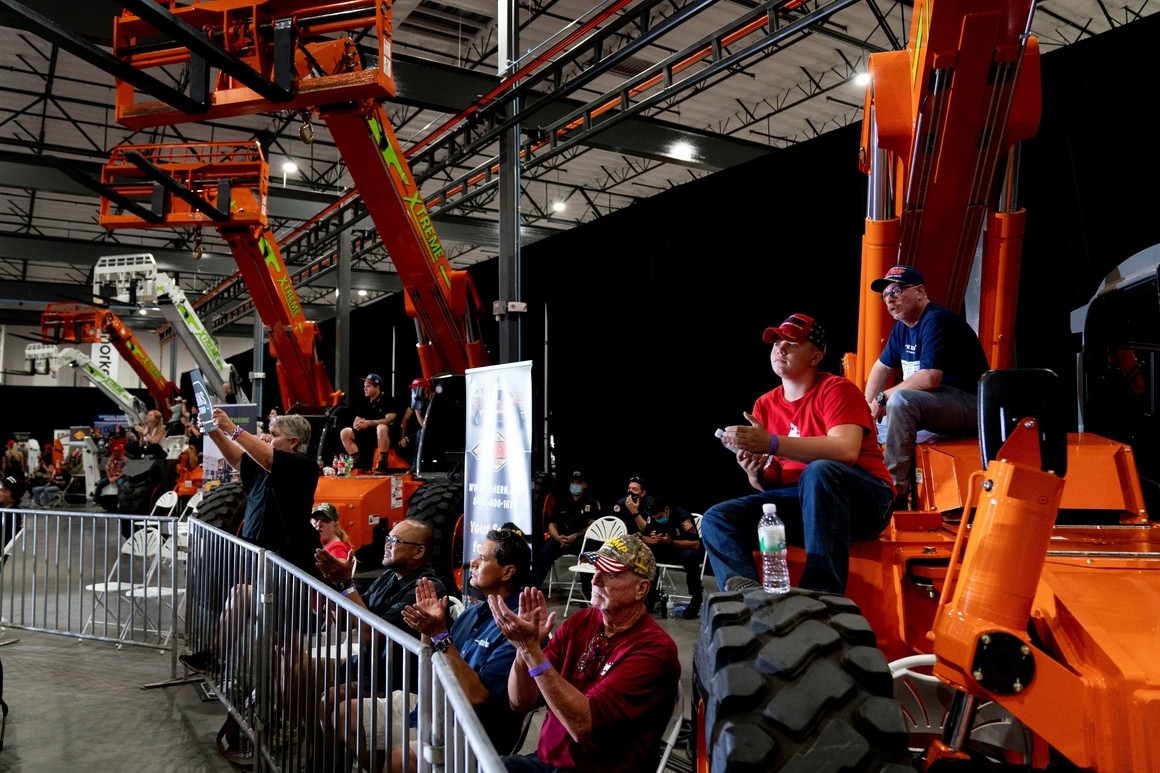Americans are about to decide whether or not to give President Donald Trump a second term. One of his key selling points is the progress we have made in restoring American manufacturing.
Here you can read how much the Trump administration has led the nation in rebuilding jobs, output, wages, and exports. But how did that happen? What policies created the Trump boom?
Tax cuts helped all U.S. businesses. The general approach of economic nationalism boosted confidence. But there were at least 7 specific policies that gave a bit lift to manufacturing:
1. Tearing up the Trans-Pacific Partnership. President Trump immediately — on the third day of his presidency — withdrew the U.S. from the Trans-Pacific Partnership, known as the TPP. He rejected the deal negotiated under Barack Obama’s administration as not providing enough protection for U.S. jobs or opportunities for U.S. businesses. Critics of the TPP said it would cost more than 400,000 U.S. jobs.
2. Pulling U.S. Out of Paris Climate Agreement. On June 1, 2017, Trump announced the U.S. would pull out of the Paris Climate Accord. The agreement would have greatly hampered U.S. factories while allowing China to continue record-levels of pollution.
3. Protecting Domestic Washing Machine and Solar Panel Producers from Unfair Competition. Trump approved global safeguard tariffs on $8.5 billion in imports of solar panels and $1.8 billion of washing machines on January 22, 2018.
4. Saving American Aluminum and Steel. The Trump administration’s investigations revealed that a global glut of metals — due to vast overproduction in China — was imperiling U.S. capacity to produce steel and aluminum. That, in turn, was a serious threat to U.S. national security. On March 1, 2018, Trump announced tariffs on all trading partners of 25 percent on steel and 10 percent on aluminum under national security grounds. A week later, he signed the tariff order.
5. Imposing Tariffs to Stop China’s Predatory Mercantilism.
- In the summer of 2017, U.S. Trade Representative Robert Lighthizer announced an investigation into China’s policies that might be hampering U.S. property rights, innovation, or technology development.
- The devastating report found China was stealing U.S. technology by forcing U.S. companies to handover tech to Chinese-controlled joint-ventures. The Trump administration responded with a $50 billion list of 1,333 Chinese products on which it intended to impose 25 percent tariffs. When
- After China published its own list of U.S. products—from cars, to aircraft, to agricultural goods—that it would subject to forthcoming 25 percent tariffs as retaliation, Trump told Lighthizer to put a 10 percent tariff on $200 billion of additional goods.
- In the summer of 2018, U.S. imposed the 25 percent tariff on the first list of $50 billion of goods. Trump threatens to impose tariffs on all US imports from China, which totaled $504 billion in 2017.
- By September 2018, the 10 percent tariffs on $200 billion of Chinese products take effect.
- Trump declared a trade truce in December 2018, but said if talks did not produce an agreement, the 10 percent tariffs would rise to 25 percent.
- China and the U.S. spent much of 2019 in stop and start negotiations. In May, the U.S. raised the 10 percent tariff to 25 percent and then makes plans to raise tariffs on all remaining Chinese goods.
6. Enacting the Phase One Trade Agreement with China. On January 15, 2020, the U.S. and China signed a historic trade agreement. China agreed to purchase the extraordinary amount of an additional $200 billion worth of US exports while almost all of the Trump administration’s tariffs remain in effect.
7. Replacing NAFTA with USMCA. The Trump administration scrapped the 1990s-era North American Free Trade Agreement (NAFTA), replacing it with the U.S.-Mexico-Canada Agreement (USMCA). The new deal creates a more level playing field for American workers, including effective rules of origin for automobiles, trucks, other products, and disciplines on currency manipulation. It will serve as the model for future trade agreements in a second Trump administration.





So where are all these new manufacturer jobs ?? I believe there are less now then when Trump took office